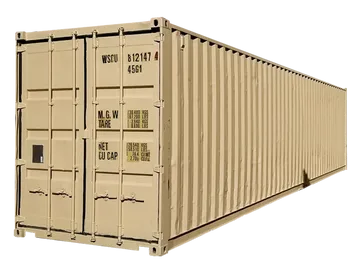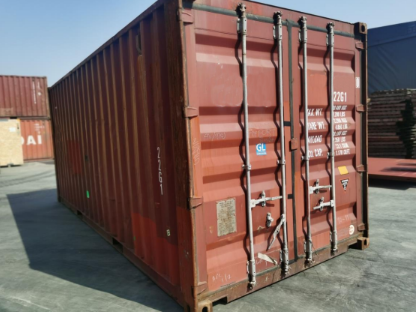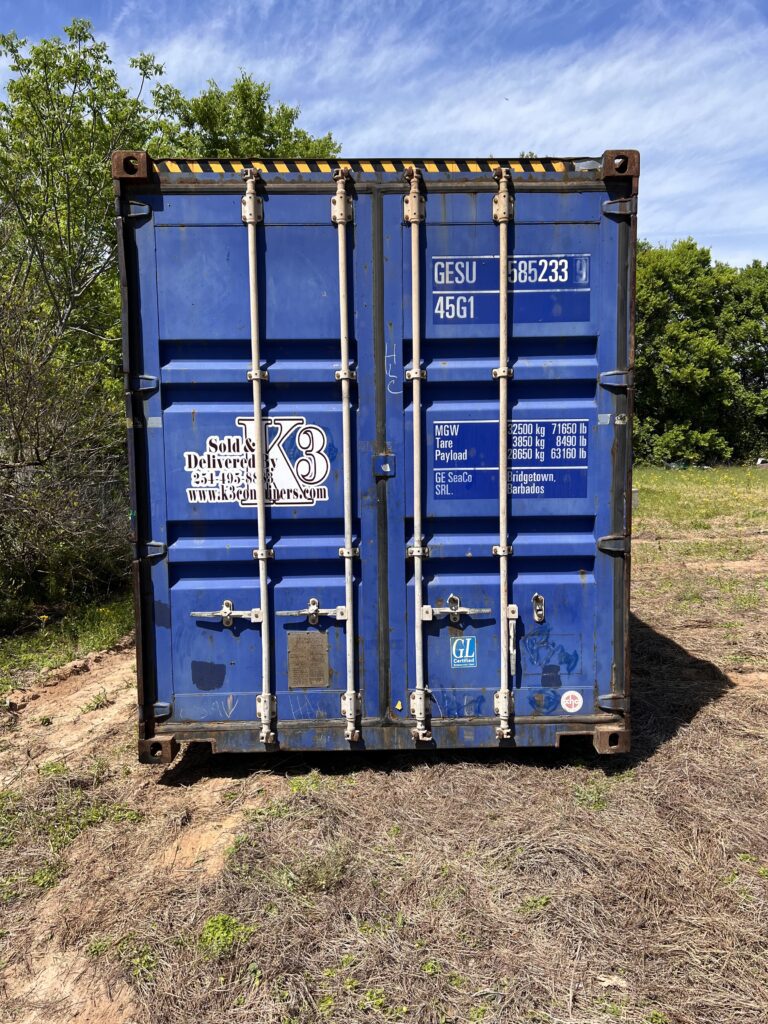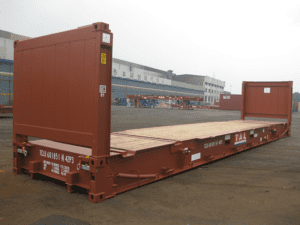I. Introduction
Container grades play a vital role in determining the quality, safety, and functionality of shipping containers. Whether you’re buying or selling containers, understanding the differences between A, B, and C grades can help you make informed decisions that align with your needs and budget. In this blog post, we’ll provide a detailed comparison of these three container grades, discussing their characteristics, common uses, and advantages.
II. Basics of Container Grades
A. Definition and purpose of container grading
Container grading is a system used to assess the quality and condition of shipping containers. The primary purpose of grading is to ensure that containers meet safety and functionality standards, making them suitable for various applications, such as shipping goods, storage, and construction. Grading helps buyers and sellers establish the value of a container, as higher-grade containers typically command a higher price due to their superior condition.
B. Overview of the grading process
1. Inspection criteria
The grading process involves a thorough inspection of the container to assess its structural integrity, functionality, and appearance. Key criteria include the condition of the container’s frame, walls, flooring, doors, and locking mechanisms. Inspectors also look for signs of rust, corrosion, dents, and other cosmetic damage that could affect the container’s performance or lifespan.
2. Who is responsible for grading?
Container grading is typically conducted by professional surveyors or inspectors hired by container leasing companies, manufacturers, or resellers. These experts possess in-depth knowledge of container construction and the industry’s safety standards, ensuring that the grading process is accurate and consistent.
III. Grade A Containers (New/One Trip)
A. Definition and key characteristics
- New or near-new condition
Grade A containers are in new or near-new condition, having experienced minimal use or exposure to harsh environments. These containers exhibit little to no signs of wear and tear and have no structural or functional defects.
- Minimal cosmetic damage
Although Grade A containers may have some minor cosmetic imperfections, such as light scratches or paint chipping, these flaws do not affect the container’s overall performance. The doors, seals, and locking mechanisms are in excellent working order, ensuring a secure and weatherproof storage environment.

B. Common uses for Grade A containers
- Shipping
Due to their exceptional condition, Grade A containers are ideal for shipping valuable or sensitive cargo, as they provide a high level of protection against the elements, pests, and theft.
- Storage
Individuals and businesses seeking long-term, secure storage solutions often opt for Grade A containers, as their structural integrity and weather resistance ensure that stored items remain safe and undamaged.
- Residential or commercial construction
Grade A containers are also popular choices for residential and commercial construction projects, including container homes, offices, and retail spaces. Their excellent condition allows for minimal modifications and repairs, saving time and money during the construction process.
C. Advantages of Grade A containers
- Longevity
One of the primary benefits of Grade A containers is their longevity. Due to their excellent condition, these containers have a longer lifespan than their lower-grade counterparts, making them a smart investment for long-term projects or storage needs.
- Minimal maintenance required
Since Grade A containers are in near-new condition, they require minimal maintenance to keep them in optimal working order. This can save both time and money, particularly for those using the container for extended periods or in demanding environments.
IV. Grade B Containers (Grade 2 & 3)
A. Definition and key characteristics
- Moderate wear and tear
Grade B containers show signs of moderate wear and tear, having been used more extensively than Grade A containers. While they may have some minor structural or functional issues, such as small dents or slightly misaligned doors, these flaws do not significantly impact their overall performance.
- Some cosmetic damage
Cosmetic damage, such as rust, scratches, or paint chipping, is more apparent on Grade B containers. However, these imperfections are primarily aesthetic and do not compromise the container’s structural integrity or functionality.

B. Common uses for Grade B containers
- Shipping non-sensitive items
Grade B containers are suitable for shipping non-sensitive items that don’t require the pristine condition of a Grade A container. Their lower cost makes them a popular choice for transporting goods that can withstand minor fluctuations in temperature or humidity.
- On-site storage
Businesses and individuals seeking cost-effective on-site storage solutions may choose Grade B containers. While they may not offer the same level of protection as Grade A containers, they are still capable of securely storing items for extended periods.
- Low-budget construction projects
For those undertaking low-budget construction projects, Grade B containers provide a more affordable alternative to Grade A containers. While they may require some additional repair or modification work, their lower initial cost can offset these expenses.
C. Advantages of Grade B containers
- More affordable than Grade A
Grade B containers are typically more affordable than their Grade A counterparts, making them an attractive option for buyers with budget constraints or those who don’t require a pristine container.
- Adequate for less demanding applications
Although they may show signs of wear and tear, Grade B containers are still functional and suitable for various applications, including shipping and storage. They offer a cost-effective solution for those with less demanding requirements.
V. Grade C Containers (Grade 4 & 5)
A. Definition and key characteristics
- Significant wear and tear
Grade C containers exhibit significant wear and tear, having been used extensively or exposed to harsh environmental conditions. These containers may have structural damage or rust, which can impact their overall performance and lifespan.
- Structural damage or rust
Structural damage, such as large dents or compromised sections, is more common in Grade C containers. Rust and corrosion may also be present, potentially affecting the container’s ability to protect its contents from the elements.
B. Common uses for Grade C containers
- Temporary storage
Grade C containers can be used for temporary storage needs, where the container’s condition is less critical. However, it’s essential to thoroughly inspect the container to ensure it provides adequate protection for the stored items.
- Recycling or scrapping
Grade C containers are often recycled or scrapped due to their poor condition. They can be repurposed for various applications, such as creating art installations, or used as a source of raw materials for manufacturing new products.
- Non-structural, low-risk applications
In some cases, Grade C containers can be used for non-structural, low-risk applications, such as creating barricades or temporary fencing. However, these uses should be carefully considered, as the container’s structural integrity may be compromised.
C. Advantages of Grade C containers
- Lowest cost
Grade C containers are the least expensive option, making them suitable for those with very tight budgets or for projects where the container’s condition is not a significant concern.
- Suitable for short-term or limited-use projects
For short-term or limited-use projects, Grade C containers can provide a cost-effective solution. However, it’s important to carefully evaluate the container’s condition to ensure it’s appropriate for the intended use.
VI. Factors Influencing Container Grades
A. Age and usage history
The age of a container and its history of usage can greatly influence its grade. As containers age and are subjected to more use, they are more likely to experience wear and tear, damage, and corrosion. Containers that have been frequently used for shipping or exposed to harsh conditions may exhibit more signs of deterioration than those with a limited usage history.
B. Environmental exposure
The environment in which a container has been stored or used can significantly impact its condition and, consequently, its grade. Exposure to extreme temperatures, humidity, saltwater, or other corrosive elements can cause a container to degrade more quickly. Containers used primarily in coastal areas or regions with severe weather conditions may show more signs of corrosion or structural damage than those used in more temperate climates.
C. Manufacturing quality
The quality of materials and construction methods used in manufacturing a container can also affect its grade. High-quality materials and superior craftsmanship result in more durable and longer-lasting containers, which can maintain a higher grade for a more extended period. Conversely, containers made from lower-quality materials or using subpar construction methods may degrade more quickly and be more prone to damage or failure.
D. Maintenance and repair history
A container’s maintenance and repair history can play a significant role in determining its grade. Containers that have been well-maintained and promptly repaired when issues arise are more likely to remain in good condition and maintain a higher grade. On the other hand, containers that have been neglected or improperly repaired may develop more severe issues over time, which can lower their grade.
By understanding these factors, buyers and sellers can make more informed decisions about the condition and value of a shipping container. Proper evaluation of these factors can help ensure that a container is suitable for its intended purpose and provides an accurate reflection of its grade.
VII. How to Choose the Right Container Grade
A. Assessing your needs and budget
Before selecting a container grade, it’s essential to evaluate your specific needs and budget. Determine the purpose of the container, whether it’s for shipping, storage, or construction, and consider the level of protection and durability required for your intended use. Also, consider the length of time you’ll need the container and the environmental conditions it will be exposed to. Establish a budget that balances your needs with the cost of the container, taking into account factors such as maintenance, repairs, and potential resale value.
B. Inspecting containers before purchase
To ensure you’re choosing the right container grade, it’s crucial to inspect the container thoroughly before making a purchase. Check for visible signs of wear and tear, structural damage, rust, and corrosion. Evaluate the condition of the container’s doors, seals, and locking mechanisms, as these can significantly impact its functionality and security. If possible, consult with a professional inspector or surveyor to get an expert opinion on the container’s condition and grade.
C. Working with reputable suppliers
When selecting a container grade, it’s essential to research various container manufacturers and suppliers to identify those that have a reputation for producing high-quality containers. Look for manufacturers that use high-quality materials and adhere to industry standards during the production process. Additionally, consider suppliers who provide detailed information about container grades and offer a range of options to meet your needs.
VIII. Conclusion
In summary, understanding the differences between A, B, and C container grades is crucial for making informed decisions when buying or selling shipping containers. By considering factors such as your budget, intended use, and the container’s condition, you can select the appropriate grade for your project. Using this guide as a reference can help ensure that you make the best choice for your needs.




